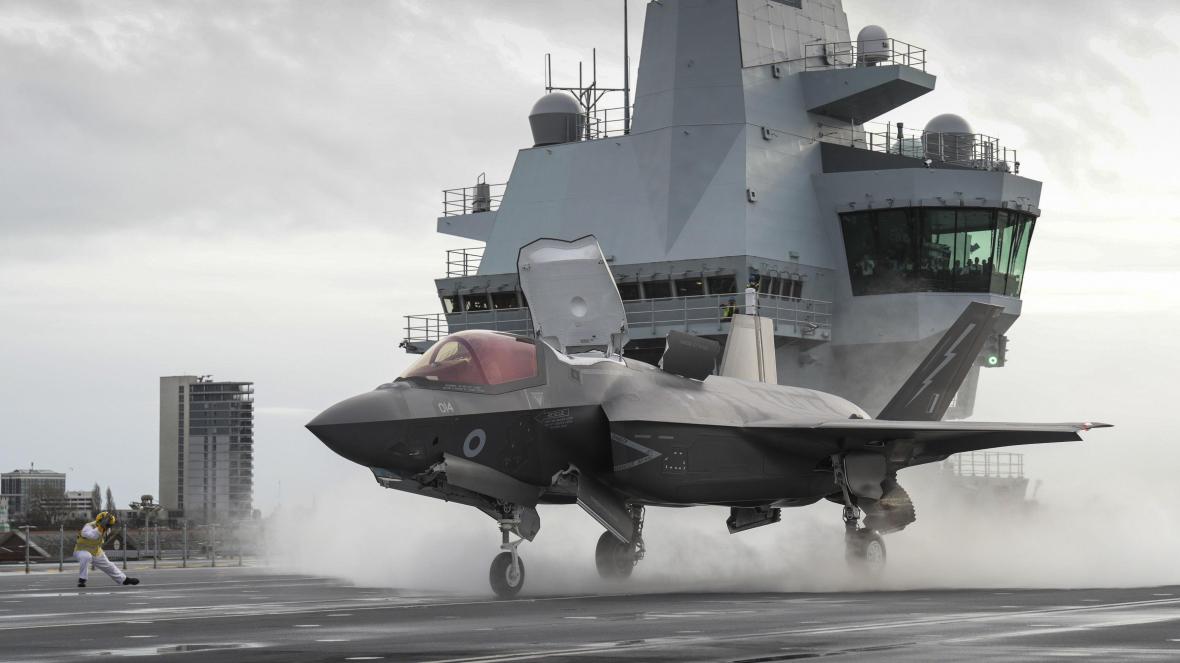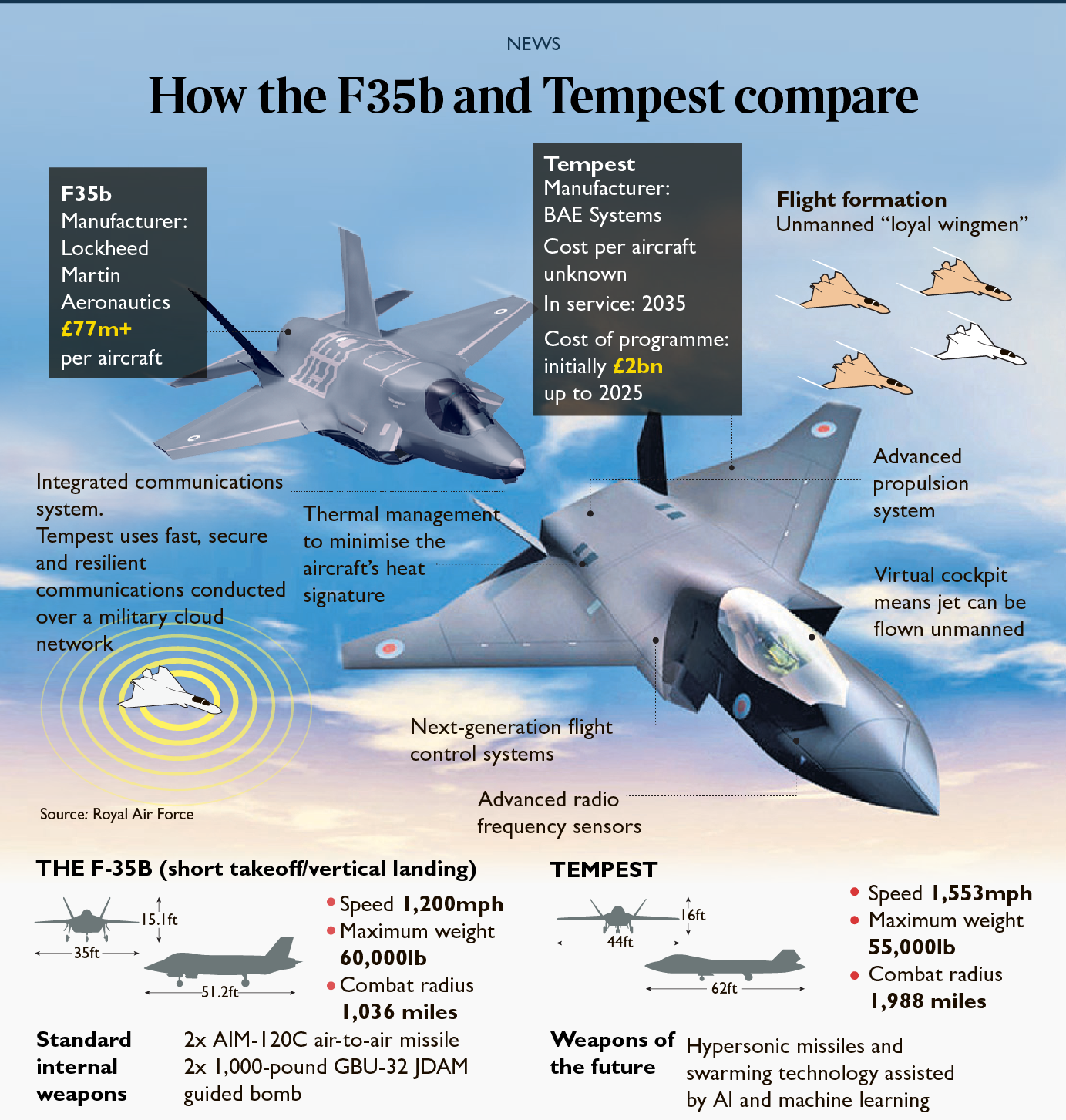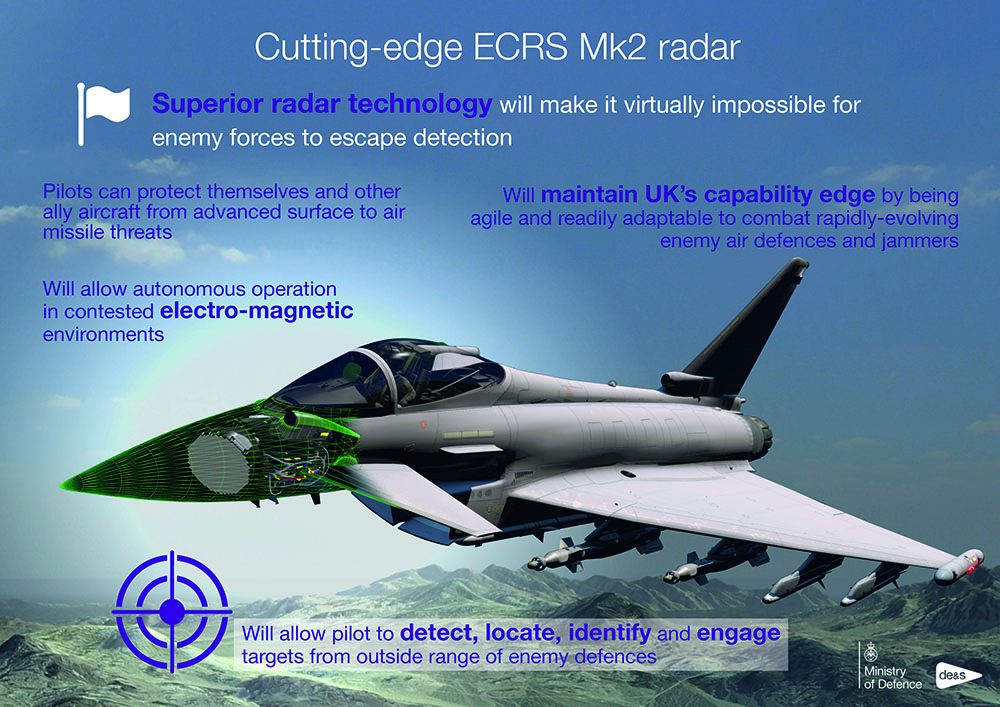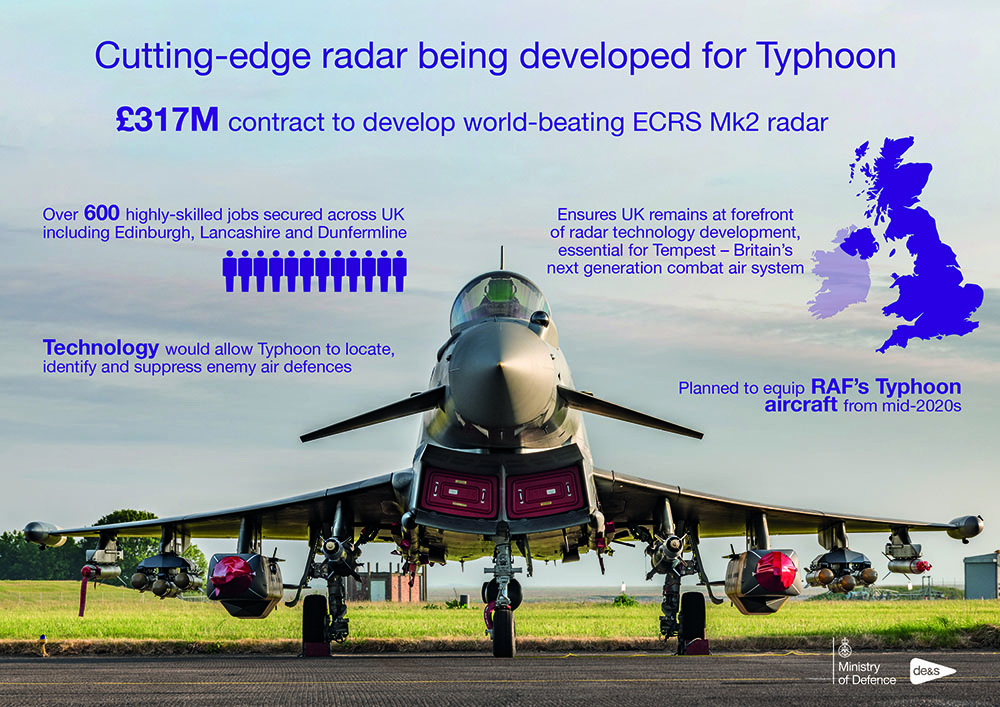You are using an out of date browser. It may not display this or other websites correctly.
You should upgrade or use an alternative browser.
You should upgrade or use an alternative browser.
Royal Air Force(United Kingdom)
- Thread starter TR_123456
- Start date
Britain may halve fighter jet purchases

Britain could buy only half its target of 138 F-35 Lightning II fighter jets, according to sources close to the government’s defence review.
The UK has agreed to buy 48 of the stealth multirole jets by the end of 2025 for £9.1 billion. It is the most expensive weapons system in military history.
Britain has ordered the short take-off and vertical landing variant of the jet, which is designed to fly from aircraft carriers. The Royal Navy’s Queen Elizabeth-class carriers are expected to deploy with between 12 and 36 F-35s on board, depending on the operation.
A wider British aspiration to buy 138 of the aircraft over the lifespan of the US-led programme is seen as unlikely to be fulfilled, defence sources said.
The 138 figure was confirmed as an ambition in the UK defence review in 2015, but the Commons defence committee noted later that this decision was taken “following some hesitation”. Britain is not contractually obliged to buy any more than 48.
It is understood that as part of the foreign policy, defence and security integrated review due to conclude in November, military chiefs have discussed the figure of 70 F-35s as a credible minimum total order.
Discussions are said to be continuing about how to balance investment in the American-designed jets that are state-of-the-art and in production, with channelling funding into Tempest, a next-generation fighter jet programme led by the UK that is at an early stage.
A third factor in Britain’s combat air-power funding equation is a scheme to upgrade the RAF’s Typhoon fighter jets with the latest technology. In the longer term the aim is for the Tempest jet, which is due to come into service from 2035, to replace Typhoons when they are phased out of service from the late 2030s.
However, a defence source emphasised last night that no final decisions in the review had been taken. “With every review it is always the case that people draw early and false conclusions from leaks. We advise against making assumptions based on partial information,” the source said. “The guiding principle of the [integrated review] is to ask ourselves what the threat is, and whether we have the capability to meet it.”
In 2001 Britain invested $2 billion in the development of the F-35, becoming the only tier-one partner to the US, which has invested hundreds of billions of dollars in it. About 15 per cent of the F-35, by value, is made in the UK and there are global orders for 3,000 over the course of the jet’s lifetime.

Tempest, which is envisaged as being “optionally manned” so that it can be piloted by a human or operated remotely as an unstaffed platform, has attracted £2 billion of investment so far. It is set to control a swarm of unmanned combat drones, also known as “loyal wingmen”, which will fly alongside it. Tobias Ellwood, Conservative chairman of the Commons defence select committee, urged ministers to think carefully before slashing the number of total F-35 orders.
“In the first Gulf War, we had 36 fast-jet squadrons; we are now down to six. We’re getting close to having a niche combat capability. We can’t keep eroding our spectrum of capability in this way,” he said yesterday.
Air Chief Marshal Sir Michael Graydon, former head of the RAF, said: “Am I happy with the idea of cutting F-35s in the long-term ? No, I’m not, because it would undoubtedly leave us even shorter of frontline combat squadrons.”
However, Justin Bronk, a research fellow in combat air-power at the Royal United Services Institute, said that although a fleet of 70 F-35s would be “on the lower end of expectations”, it “makes sense”. At that number, the RAF would be able to keep 60 in service, with ten held back to replace any aircraft lost to attrition or age-related damage, he said. Mr Bronk suggested that investment in Tempest may create British jobs, but was sceptical that the resulting jet would outperform the F-35.
“Even in an optimistic scenario, the UK and Italy with potentially other partners such as Sweden will be able to contribute a fraction of the investment in both development and acquisition of the US to a next-generation fighter programme,” he said.
“So it should be admitted up front that the overall capability is likely to be behind what the Americans are producing at a similar point, making the arguments for Tempest primarily sovereign industrial arguments rather than operational capability ones.”
Francis Tusa, editor of the Defence Analysis newsletter, said: “It’s obvious 138 is a vaporous figure, unless you were to say, ‘Let’s scrap the army completely and spend the money on the RAF’. Support costs of F-35s [are] eye-watering and the availability rate is poor because of the waiting time for spare parts.”
• Britain’s flagship aircraft carrier in the Falklands conflict of 1982 is to be scrapped after plans to save it failed. The salvaged metal could be used for motorcycles. HMS Hermes was once the oldest serving warship in the world before being decommissioned in 2017. It was sold to the Indian navy in 1986 and has now been sold again in Mumbai for £5.1 million to Shree Ram Group, Asia’s biggest ship scrapyard.

Britain could buy only half its target of 138 F-35 Lightning II fighter jets, according to sources close to the government’s defence review.
The UK has agreed to buy 48 of the stealth multirole jets by the end of 2025 for £9.1 billion. It is the most expensive weapons system in military history.
Britain has ordered the short take-off and vertical landing variant of the jet, which is designed to fly from aircraft carriers. The Royal Navy’s Queen Elizabeth-class carriers are expected to deploy with between 12 and 36 F-35s on board, depending on the operation.
A wider British aspiration to buy 138 of the aircraft over the lifespan of the US-led programme is seen as unlikely to be fulfilled, defence sources said.
The 138 figure was confirmed as an ambition in the UK defence review in 2015, but the Commons defence committee noted later that this decision was taken “following some hesitation”. Britain is not contractually obliged to buy any more than 48.
It is understood that as part of the foreign policy, defence and security integrated review due to conclude in November, military chiefs have discussed the figure of 70 F-35s as a credible minimum total order.
Discussions are said to be continuing about how to balance investment in the American-designed jets that are state-of-the-art and in production, with channelling funding into Tempest, a next-generation fighter jet programme led by the UK that is at an early stage.
A third factor in Britain’s combat air-power funding equation is a scheme to upgrade the RAF’s Typhoon fighter jets with the latest technology. In the longer term the aim is for the Tempest jet, which is due to come into service from 2035, to replace Typhoons when they are phased out of service from the late 2030s.
However, a defence source emphasised last night that no final decisions in the review had been taken. “With every review it is always the case that people draw early and false conclusions from leaks. We advise against making assumptions based on partial information,” the source said. “The guiding principle of the [integrated review] is to ask ourselves what the threat is, and whether we have the capability to meet it.”
In 2001 Britain invested $2 billion in the development of the F-35, becoming the only tier-one partner to the US, which has invested hundreds of billions of dollars in it. About 15 per cent of the F-35, by value, is made in the UK and there are global orders for 3,000 over the course of the jet’s lifetime.

Tempest, which is envisaged as being “optionally manned” so that it can be piloted by a human or operated remotely as an unstaffed platform, has attracted £2 billion of investment so far. It is set to control a swarm of unmanned combat drones, also known as “loyal wingmen”, which will fly alongside it. Tobias Ellwood, Conservative chairman of the Commons defence select committee, urged ministers to think carefully before slashing the number of total F-35 orders.
“In the first Gulf War, we had 36 fast-jet squadrons; we are now down to six. We’re getting close to having a niche combat capability. We can’t keep eroding our spectrum of capability in this way,” he said yesterday.
Air Chief Marshal Sir Michael Graydon, former head of the RAF, said: “Am I happy with the idea of cutting F-35s in the long-term ? No, I’m not, because it would undoubtedly leave us even shorter of frontline combat squadrons.”
However, Justin Bronk, a research fellow in combat air-power at the Royal United Services Institute, said that although a fleet of 70 F-35s would be “on the lower end of expectations”, it “makes sense”. At that number, the RAF would be able to keep 60 in service, with ten held back to replace any aircraft lost to attrition or age-related damage, he said. Mr Bronk suggested that investment in Tempest may create British jobs, but was sceptical that the resulting jet would outperform the F-35.
“Even in an optimistic scenario, the UK and Italy with potentially other partners such as Sweden will be able to contribute a fraction of the investment in both development and acquisition of the US to a next-generation fighter programme,” he said.
“So it should be admitted up front that the overall capability is likely to be behind what the Americans are producing at a similar point, making the arguments for Tempest primarily sovereign industrial arguments rather than operational capability ones.”
Francis Tusa, editor of the Defence Analysis newsletter, said: “It’s obvious 138 is a vaporous figure, unless you were to say, ‘Let’s scrap the army completely and spend the money on the RAF’. Support costs of F-35s [are] eye-watering and the availability rate is poor because of the waiting time for spare parts.”
• Britain’s flagship aircraft carrier in the Falklands conflict of 1982 is to be scrapped after plans to save it failed. The salvaged metal could be used for motorcycles. HMS Hermes was once the oldest serving warship in the world before being decommissioned in 2017. It was sold to the Indian navy in 1986 and has now been sold again in Mumbai for £5.1 million to Shree Ram Group, Asia’s biggest ship scrapyard.
Tempest's Technology Level Is Rising
 Tempest's Technology Level Is Rising25 August, 2020
Tempest's Technology Level Is Rising25 August, 2020
The UK's 6th generation fighter jet programme Tempest, which is run by BAE Systems, Rolls-Royce, MBDA and Leonardo, has been announced as using digital design concepts for the construction process.
BAE Systems said simulation and 3D printing were being used to accelerate the development of fighter jets, which are scheduled to enter active service by 2035.
Conceptual shapes for the aircraft were virtually designed and tested. The scale models were printed in 3D after being digitally tested, and the aerodynamic features of the design were tested at wind tunnel facilities in Lancashire.
The process to shape the final design of the fighter jet is digitised by the "smart factory" opened in Lancashire. In the factory, where the production process is planned to be completely digitized with robot technology, an environment where human and artificial intelligence will work together will be used for Tempest.



The UK's 6th generation fighter jet programme Tempest, which is run by BAE Systems, Rolls-Royce, MBDA and Leonardo, has been announced as using digital design concepts for the construction process.
BAE Systems said simulation and 3D printing were being used to accelerate the development of fighter jets, which are scheduled to enter active service by 2035.
Conceptual shapes for the aircraft were virtually designed and tested. The scale models were printed in 3D after being digitally tested, and the aerodynamic features of the design were tested at wind tunnel facilities in Lancashire.
The process to shape the final design of the fighter jet is digitised by the "smart factory" opened in Lancashire. In the factory, where the production process is planned to be completely digitized with robot technology, an environment where human and artificial intelligence will work together will be used for Tempest.


Tempest's Technology Level Is Rising
The UK's 6th generation fighter jet programme Tempest, which is run by BAE Systems, Rolls-Royce, MBDA and Leonardo, has been announced as using digital design concepts for the construction process.
c4news.me
DE&S has helped negotiate the release of £317 million in funding to continue the development of a new world-leading radar for RAF Typhoons.
The continued development will see BAE Systems and Leonardo carry out the work, securing more than 600 highly-skilled jobs across the UK, including more than 300 at Leonardo’s Edinburgh site.
This maintains a highly-specialized, world-leading industry base that will ensure the UK remains at the forefront of radar technology development, which is essential for the Future Combat Air System (FCAS).

The Active Electronically Scanned Array (AESA) radar, known as European Common Radar System (ERS) Mk2, will have an electronic warfare and electronic attack capacity, in addition to ‘traditional’ radar capabilities, to locate, identify and then suppress enemy air defences using high-powered, wide-band jamming.
The advanced sensor technologies of the AESA equipped ECRS Mk2 will not only ensure UK Typhoon maintains a capability edge in the increasingly contested battlespace it will face in future years, but they are also central to the longer term and FCAS.
Air Vice Marshall Keith Bethell, Director Combat Air at DE&S, said: “I am delighted with the announcement of the contract for the development of the next generation radar capability for Typhoon.
“It is a product of persistent hard work from the Typhoon Enterprise in the UK, working with our colleagues in the European Partner Nations, to cement the agreements to progress the development of the ECRS Mk2 design through to a prototype radar.
“This project has strong ties to the Combat Air Strategy and promises to deliver a formidable leading-edge capability, whether it be for the continued evolution of Typhoon as a world-class combat air platform or in years to come as part of Future Combat Aircraft System.
“It comes at an important time for UK industry, retaining a sovereign workforce of hundreds, building further expertise and technological innovation, with much promise for the future.”
The radar development programme, negotiated by DE&S’ Typhoon delivery team, will see hundreds of highly skilled jobs sustained across the UK.

In addition to the jobs at Leonardo’s Edinburgh’s site, there are a further 100 at Leonardo’s Luton site, 120 at BAE Systems’ site in Lancashire, 100 at BAE’s site in Dunfermline, Fife and 50 at sub-contractor Meggitt in Stevenage.
Leonardo are leading the development of the new radar, designed to meet the specific needs of the RAF, and BAE Systems will deliver its integration onto Typhoon aircraft.
DE&S CEO Sir Simon Bollom said: “This continued development is the culmination of years of collaborative work with industry to deliver cutting edge radar capability to the RAF. It will sustain hundreds of highly-skilled jobs across UK industry and is central to the UK’s future combat air strategy.”
Currently, Typhoon is fitted with a mechanically-scanning radar, but in future it is planned to upgrade Typhoons to the new ECRS Mk2 hardware.
The technology provides access to advanced modes, including the ability to simultaneously detect, identify and track multiple targets in the air and on the ground in the most challenging environments.
This, along with ECRS Mk2’s electronic warfare capability, would ensure the RAF can protect UK land and maritime forces and deliver UK air power wherever it is needed in the world.
In addition, the introduction of a ground-breaking Multi-Function Array would ensure Typhoon’s continued viability and competitiveness in the export market.
The UK’s programme is being developed in parallel to similar commitments from Germany and Spain to deliver their own national requirements for an E-Scan radar.
It is planned to equip the RAF Typhoon aircraft from the mid-2020s.

 des.mod.uk
des.mod.uk
The continued development will see BAE Systems and Leonardo carry out the work, securing more than 600 highly-skilled jobs across the UK, including more than 300 at Leonardo’s Edinburgh site.
This maintains a highly-specialized, world-leading industry base that will ensure the UK remains at the forefront of radar technology development, which is essential for the Future Combat Air System (FCAS).

The Active Electronically Scanned Array (AESA) radar, known as European Common Radar System (ERS) Mk2, will have an electronic warfare and electronic attack capacity, in addition to ‘traditional’ radar capabilities, to locate, identify and then suppress enemy air defences using high-powered, wide-band jamming.
The advanced sensor technologies of the AESA equipped ECRS Mk2 will not only ensure UK Typhoon maintains a capability edge in the increasingly contested battlespace it will face in future years, but they are also central to the longer term and FCAS.
Air Vice Marshall Keith Bethell, Director Combat Air at DE&S, said: “I am delighted with the announcement of the contract for the development of the next generation radar capability for Typhoon.
“It is a product of persistent hard work from the Typhoon Enterprise in the UK, working with our colleagues in the European Partner Nations, to cement the agreements to progress the development of the ECRS Mk2 design through to a prototype radar.
“This project has strong ties to the Combat Air Strategy and promises to deliver a formidable leading-edge capability, whether it be for the continued evolution of Typhoon as a world-class combat air platform or in years to come as part of Future Combat Aircraft System.
“It comes at an important time for UK industry, retaining a sovereign workforce of hundreds, building further expertise and technological innovation, with much promise for the future.”
The radar development programme, negotiated by DE&S’ Typhoon delivery team, will see hundreds of highly skilled jobs sustained across the UK.

In addition to the jobs at Leonardo’s Edinburgh’s site, there are a further 100 at Leonardo’s Luton site, 120 at BAE Systems’ site in Lancashire, 100 at BAE’s site in Dunfermline, Fife and 50 at sub-contractor Meggitt in Stevenage.
Leonardo are leading the development of the new radar, designed to meet the specific needs of the RAF, and BAE Systems will deliver its integration onto Typhoon aircraft.
DE&S CEO Sir Simon Bollom said: “This continued development is the culmination of years of collaborative work with industry to deliver cutting edge radar capability to the RAF. It will sustain hundreds of highly-skilled jobs across UK industry and is central to the UK’s future combat air strategy.”
Currently, Typhoon is fitted with a mechanically-scanning radar, but in future it is planned to upgrade Typhoons to the new ECRS Mk2 hardware.
The technology provides access to advanced modes, including the ability to simultaneously detect, identify and track multiple targets in the air and on the ground in the most challenging environments.
This, along with ECRS Mk2’s electronic warfare capability, would ensure the RAF can protect UK land and maritime forces and deliver UK air power wherever it is needed in the world.
In addition, the introduction of a ground-breaking Multi-Function Array would ensure Typhoon’s continued viability and competitiveness in the export market.
The UK’s programme is being developed in parallel to similar commitments from Germany and Spain to deliver their own national requirements for an E-Scan radar.
It is planned to equip the RAF Typhoon aircraft from the mid-2020s.

World-leading radar to be developed for RAF Typhoons - Defence Equipment & Support
DE&S has helped negotiate the release of £317 million in funding to continue the development of a new world-leading radar for RAF Typhoons



